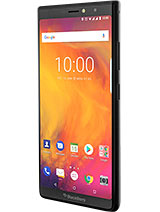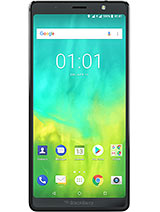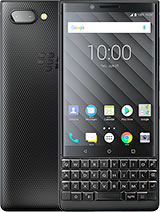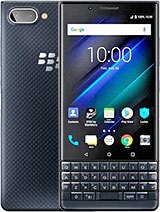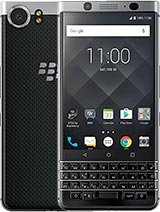BlackBerry KEY2 Camera Review - Sweeter Than the Past By Android Headlines - Android News & Tech News
Blackberry phones have never been known for their cameras and while many models have delivered more than serviceable cameras, there hasn't really been one. That's worth singling out. That's all supposed to change at the BlackBerry key to the first blackberry phone with a dual camera setup and a set of hardware that looks to seriously compete with the rest of the flagships on the market. What are we working with here? The main rear camera is a 12 megapixel sensor with 1.2 8, micron, size, pixels and dual pixel phase detection, autofocus, that's behind that f-stop 1.8 lens with a 79 degree field of view. The secondary rear camera is also a 12 megapixel sensor, but with smaller 1 micron pixels and standard phase detection, autofocus situated behind an f-stop 2.6 lens with a 50 degree field of view, that's more or less 2 X optical zoom, a single 8 megapixel camera resides upfront with no notable specialties. Taking a look first at photo quality from the rear camera you'll find dynamic range can be perfect when HDR mode kicks in.
Sometimes this Auto HDR functionality is not aggressive enough, but when it's on it tends to prefer slightly darker exposures, which generally look more appealing in brighter conditions as it significantly tones down the extremely bright parts of the photos. Details are very soft. In most cases, though, daytime is typically fine, with a good amount of detail all around and even sometimes surprising, with the amount of detail that can be pulled into a 12 megapixel sensor. White balance is typically very good, sometimes coming in a tad on the warm side, but usually nothing overly offensive. Anything less than super bright light is subject to significant detail.
Loss though, and even moderate light, has lots of image processing that kills details. The priority is put on utilizing a very high ISO over slower shutter speed, which has the advantage of keeping objects from getting blurred, and it's typically the preferred way of taking photos with a small smartphone sensor. Sense movement can often be an issue. This sensor seems to struggle with noise levels at higher ISO, quite a bit more than others, though, so. The positive effects that this methodology can bring generally are not found here.
Low light, likewise is super inconsistent, but generally is not very and sometimes can be awful when comparing it next to the HTC, u12 plus you'll find that details from the key to simply cannot compare with the u12 plus in any low-light situation, despite having the same 12 megapixel resolution on the sensor, and a lot of this has to do with the pixel size on that sensor, with smaller pixels. The key to just can't take in as much light as many other flagships and as a result, lower light photos, don't just turn out noisier than others. They also turn out darker in general. This also applies for moderate light, not just super dark scenes, and a lot of indoor photos tend to look more like this than not. There are exceptions like when pitting against the 1 plus 6, where the BlackBerry key 2 tended to win in this particular scenario, quite a bit having better overall exposure and white balance, but still losing out on details and many of the scenes.
Another thing to note are the weird times when the shutter would take a long time to actually take the photo resulting in a blurred image, because the viewfinder appeared to take the shot, but it actually took a second or so to capture this. Wasn't common, and I actually couldn't capture it for this review. So sorry ahead of time, but it happened enough to make me hold extra still anytime, I was taking a picture in less than daylight conditions. Blackberry has opted for a sensor with dual pixel phase detection autofocus, which means it essentially focuses instantly just like many other phones at this tech, notably Samsung's, Galaxy, S and note lines as well as HTC's, you 11, and you 12 it tracks. Motion extremely well, and I cannot recall a single time when the rear camera focused on the wrong thing or even missed the shot at all, due to any kind of focusing issues, even in darker light, despite having a secondary sensor with the 50 millimeter lens, which is roughly equivalent to 2 X optical zoom, there's not much of an enhancement while clicking on that 2 X zoom button on the viewfinder.
When comparing it to another phone, that does not have an optical zoom lens, like the 1 plus 6, for example, it's surprising how little difference there actually is in the photos sure the 1 plus 6 has a 4 megapixel larger sensor, but the difference in megapixel count doesn't make up for what a 50 millimeter lens should be able to achieve here. This secondary lens is also not usable. Video, which is a huge missed opportunity, as zooming into videos, is just a simple digital crop, instead resulting in a loss of detail at any further end than 1 X portrait mode uses. This secondary sensor exclusively, though, and looks quite nice in general, there's, certainly something about phones that feature a 2 X zoom lens for portrait mode shots as it seems to help the phone differentiate. The foreground from the background better, even using it on objects or other scenes, instead of actual portraits turned out very nicely, as the camera does not shut off that portrait mode effect, if it doesn't detect anything specific, whereas many other phones will shut that effect off.
If it doesn't see a face or something right in the foreground as a result, you can get some really nice artistic, looking landscape shots because of this, although sometimes you'll end up with a bit, that's in focus that probably shouldn't be it'll turn off the effect. If there's not enough light, though so, no portrait mode shots and darker lighting conditions- and this is probably fine, because shots tend to be quite grainy if they're not done in direct sunlight type of lighting conditions. Take, for instance, this one I did at a stop light in broad daylight. Video recording is pretty interesting, and it all starts with the lens used on the main camera. This 80 degree lens is quite a bit wider than most, and it really shows when recording the same scene with two phones at once.
I stack these on top of each other. The way I always record a comparison, video and even the phone lens is being only a few millimeters apart. The 1 + 6, almost looks like it's zoomed in both are recording in 4k resolution at 30 frames per second, since this is the maximum. The BlackBerry KET can record at and even then it's obvious how much sharper the key twos images and how much better the dynamic range and overall image balance is when compared to the 1 + 6. What's also obvious, is the lack of advanced stabilization options, while recording in 4k on the key ?, as you can see when compared with the 1 + 6, which is actually able to provide both optical and electronic stabilization, while recording in 4k the BlackBerry looks unbelievably shaky in the exact same scenario.
Recording in darker situations is certainly less desirable if you're looking for quality as the picture becomes both noisy and super soft. This will happen with any camera in low-light, but it doesn't take much of a decrease in light to get to this point on the key to slow motion is pretty subpar to with the only option being 720p at 120 frames per. Second, that's just not a great thing at 2018, when we've had that quality for well over half a decade. Aside from saying the front-facing camera has no notable specs, it's awesome, not a very good camera in general. First, off there are some serious focusing issues and I found most of the time the camera somehow focused on the background instead of the person in the foreground.
That's a tad weird for a selfie camera, to say the least, which is a shame since the 8 megapixel resolution is rather good for a front-facing camera. It has support for HDR, which does help a lot in balancing out the scene, but I found it did weird things to skin tones at times. Low-Light performance is decent, but you'll definitely notice the noise and anything but the best kind of lighting very low light. The front-facing camera basically becomes unusable as there's no front-facing flash of any kind which is going to keep those nighttime selfies from being any real possibility. Last but not least, is the camera software, which is pretty standard.
Looking in most respects, the big difference is in the mode switching which is done via the icon to the right of the shutter button. What's nice about this design is that it's both easily reachable during single hand, use and every mode is consistently in the same spot, no matter what mode you're currently in these keeps the grid predictable when switching between modes and makes everything an easy single click away. With a single hand, there are also some really cool live filters which I don't normally touch upon since most phones and plenty of photo editing. Apps do, but it's nice to have a huge selection of filters right from the viewfinder and I really enjoyed that inverted one very cool effect in general. The software is fast to launch, but takes about a second to switch between modes.
I found this particularly annoying when there's no dedicated record and shutter button on that main viewfinder, meaning you'll have to switch back and forth between photo and video modes instead of having a dedicated button for quick photo or video recording double tapping. The power button launches the camera, no matter where you are or if the phone is locked and BlackBerry offers an excellent manual mode designed to enabling manual mode has to be done in the settings, but once it is enabled can be called up with a quick button on the left side. It also displays every attribute right on the screen in the lg's. Excellent interface does, but manual mode only works for photos, not videos. The other downside is that this manual interface takes away that quick, 1x 2x zoom button in the photo mode.
But of course it's in video mode since there's no manual video mode, the unique feature is the private Locker, something we covered in the main phone review, which grants the ability to instantly take a private photo without having to switch modes. A simple tap on the fingerprint scanner located in the space bar instantly takes a picture and sends it to the private Locker for safekeeping. This keeps these private photos out of the main gallery, no matter what app you prefer to use for photo gallery, and it keeps it behind a biometric, only authentication wall. This could come in handy in quite a few situations, no judgement and that wraps it up likely the best camera BlackBerry has ever put on a phone, but it doesn't come close to matching most flagships in most ways. The best part, of course, is the thing.
Blackberry typically excels in privacy bottom line. The camera will get by for regular everyday shots, but don't expect to wow anyone with shots from this camera and certainly don't buy the phone just for the camera. We hope you enjoyed that review and will subscribe to us for regularly updated content chat with us in your favorite social media network and don't forget to visit Andrew headlines comm for 24/7 tech news coverage thanks for watching and until next time.

